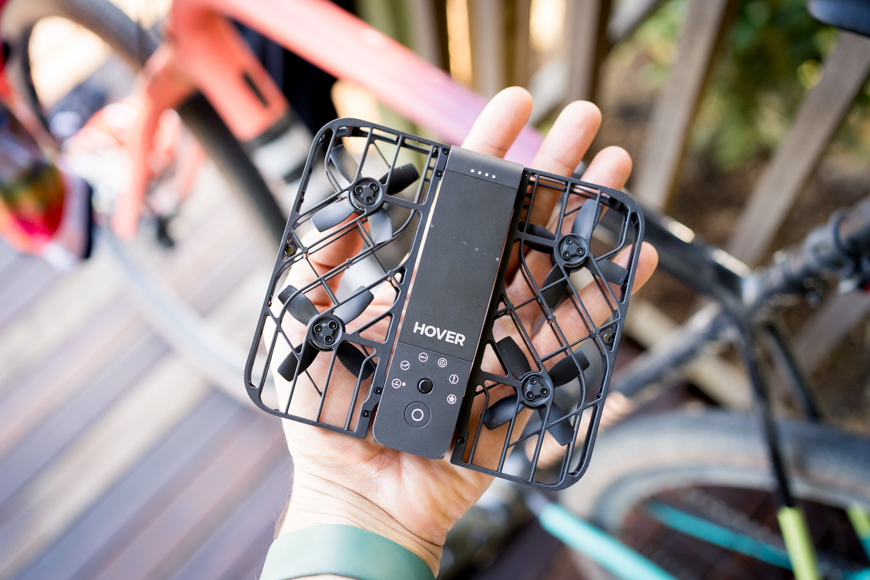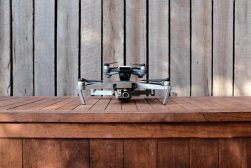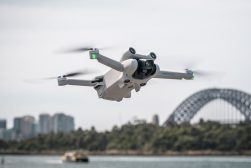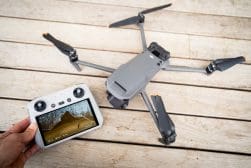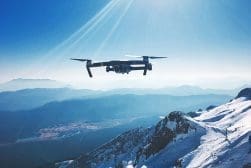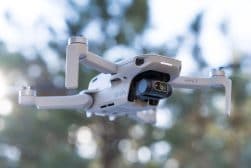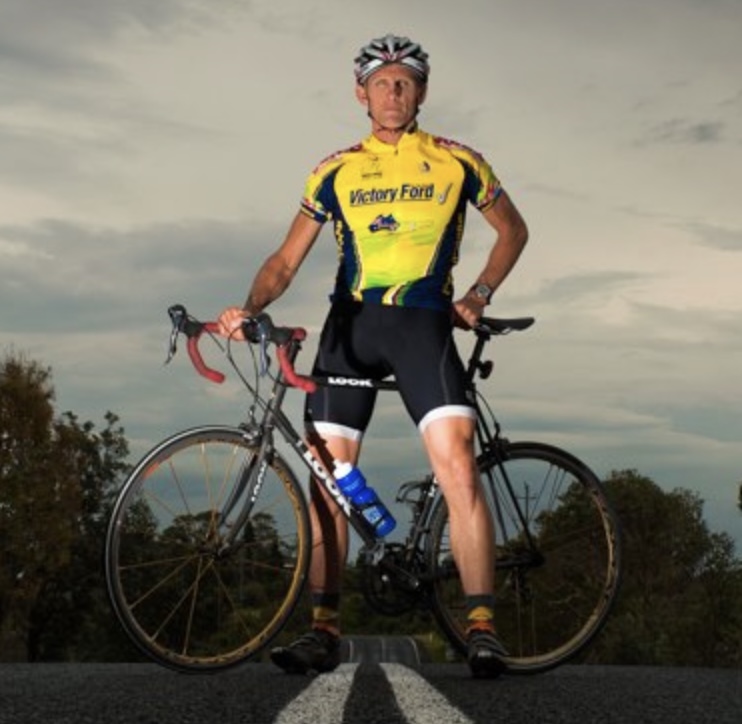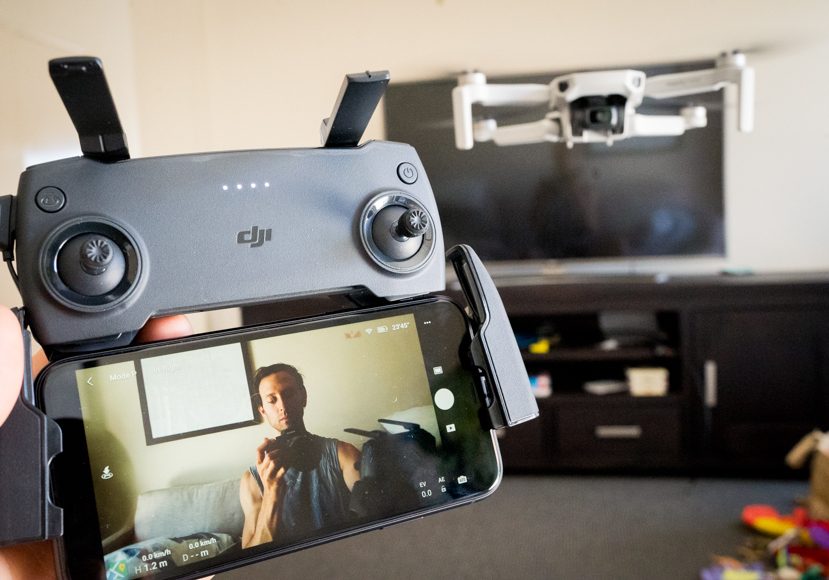
Best Selfie Drones in 2023 (Film Yourself from the Sky)
Explore the top selfie drones on the market which provide a simple, fast and affordable means to take pictures and videos of yourself from the sky.
This guide will introduce you to the best selfie drones you can buy.
Although selfies are more commonly taken with handheld devices such as mobile phones, there are more interesting and dynamic ways to do this now.
Enter the selfie drones, allowing you to take a photo or video of yourself from the sky.
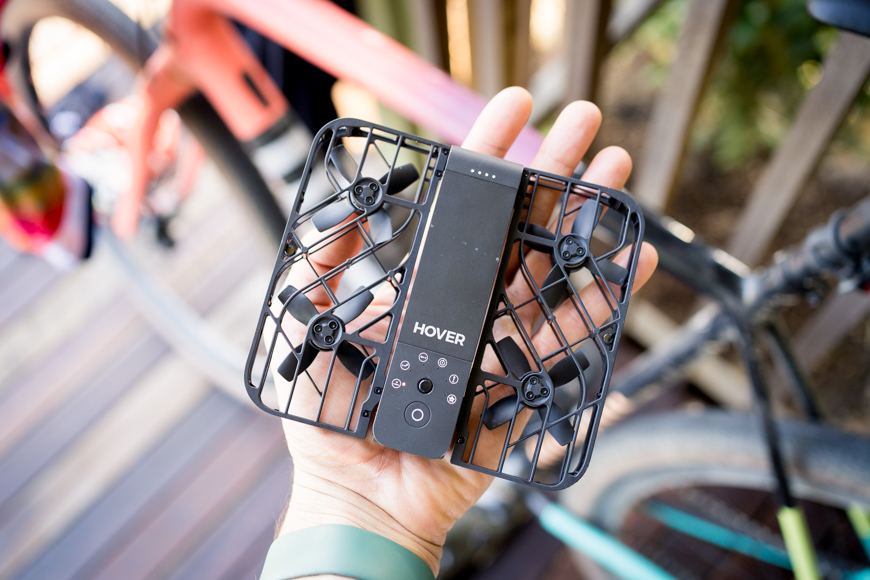
Smallest, lightest and simplest selfie drone available. Portable enough to have with you every day.
With a selfie drone, you can find angles you wouldn’t previously have had access to and not only take photo selfies but video selfies too.
Some drones are specifically marketed as selfie drones, while others are regular quadcopters that happen to have a ‘follow’ feature or subject recognition and a camera timer mode.
So, let’s dive in and take a look at some of the best selfie drones that will help you get that perfect shot of yourself.
Key Features a Selfie Drone Should Offer:
- Compact & portable
- High-res camera with wide-angle
- Face & gesture recognition
- Follow-me mode
- Obstacle avoidance
- Stable hover
- Short-range optimized
- Quick launch
- Adjustable camera tilt
- Quick image review
- Quiet operation
Table of Contents
What is the Best Best Selfie Drone in 2023?
HOVERAir X1 (Best Selfie Drone for Portability & Fast Takeoffs )
- Very easy to operate
- Fast to get airborn
- Great tracking abilities
- Extremely light and compact
- Simple app
- Video quality could be better
- Short battery life
- Flimsy
The HOVERAir X1 is a tiny and rather strange-looking selfie drone.
It’s more of a basic flying camera than a selfie drone camera that you pilot with a controller, but it’s the best on the market right now for flying selfie-takers.
It’s not super cheap, but not too expensive either, at $399.
It’s extremely light, at only 125g, can fold up small enough to fit in your pocket, and is fully automated – you don’t even need a controller to fly it!
The feather-light Hover X1 selfie drone takes off and lands directly from your hand. It can do quick shots and tracking all-in-one and, although the tracking is very simple, it works extremely well.
However, you should bear in mind that it only tracks people. But if you’re using it for selfies, that won’t be a problem.
It has a few tracking modes – Zoom Out, Orbit, and Follow – and these can be set to operate at different distances.
Its camera also tilts for vertical video, which is useful for sharing on social media platforms.
The selfie drone films 2.7K video at 30fps and 60fps, and it records and seamlessly merges its audio via an app.
It’s surprisingly stable in the wind considering its size. However, being so lightweight and compact, it’s also rather flimsy so it may not take too many bumps.
Although it doesn’t have obstacle avoidance, it does have a sensor, so it still manages to avoid large obstacles.
Plus, its propellers are protected inside a frame, so if you do crash it, it should be fine.
Battery time is only eleven minutes, but that’s enough for quick selfie use.
Overall, it’s not an advanced selfie drone like the DJI models, but it’s still our number one pick due to its pocketable dimensions and ease of use.
It’s also one of the quietest drones available, which is handy when taking selfies in public places.
DJI Mini 3 Pro (Best Selfie Drone for Enthusiasts)
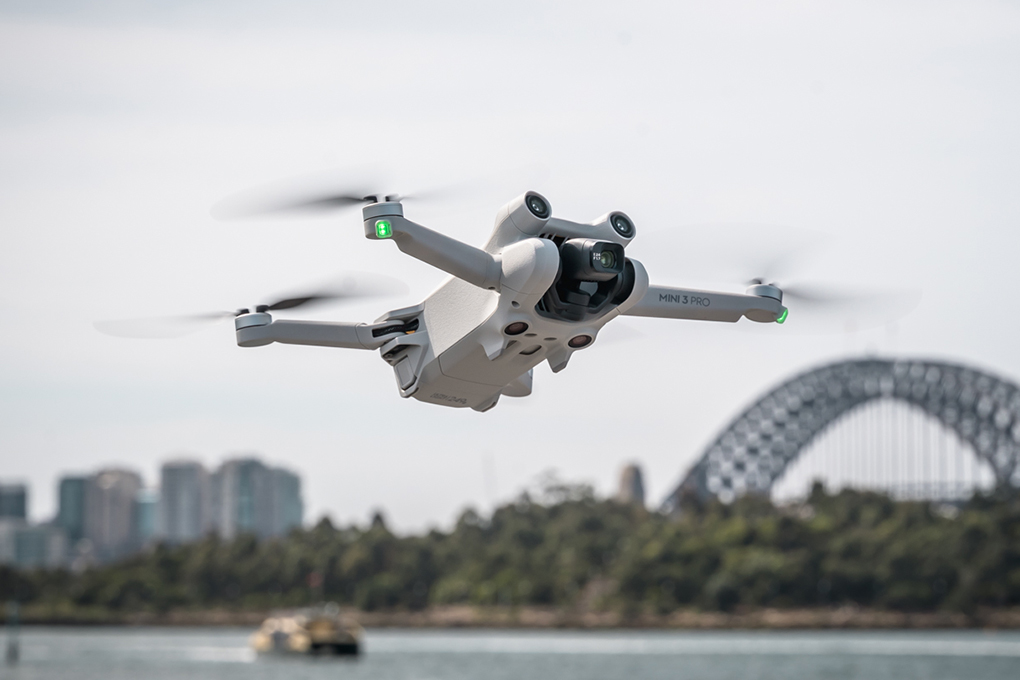
Tommy Williams
- Obstacle avoidance
- Compact and durable
- Vertical shooting option
- Follow Me flight mode
- Shoots 4K
- Can be a little unstable in strong wind
The DJI Mini 3 Pro is one of the best small selfie drones for consumers.
It’s compact and lightweight and has the features for your selfie-taking and content-creating needs.
It’s a relatively pricey drone to get if you mainly want it for selfies, but given its overall quality, it’s probably worth it.
It boasts a 4K camera that can shoot footage at 30fps, plus 2.7K footage at 60fps and 1080p at 120fps.
The DJI Mini 3 Pro has a tilting camera that can shoot vertically at full resolution, which is great news for selfie-takers who want their footage to be ready straight out of the camera for social media platforms.
You can keep it up in the air for up to 31 minutes, and it has intelligent flight modes such as “Follow Me” and “Dronie”, which are perfect for tracking yourself for taking selfies.
It also has Active Track and obstacle avoidance, which means that once you have it tracking yourself, you don’t need to worry about the drone hitting anything.
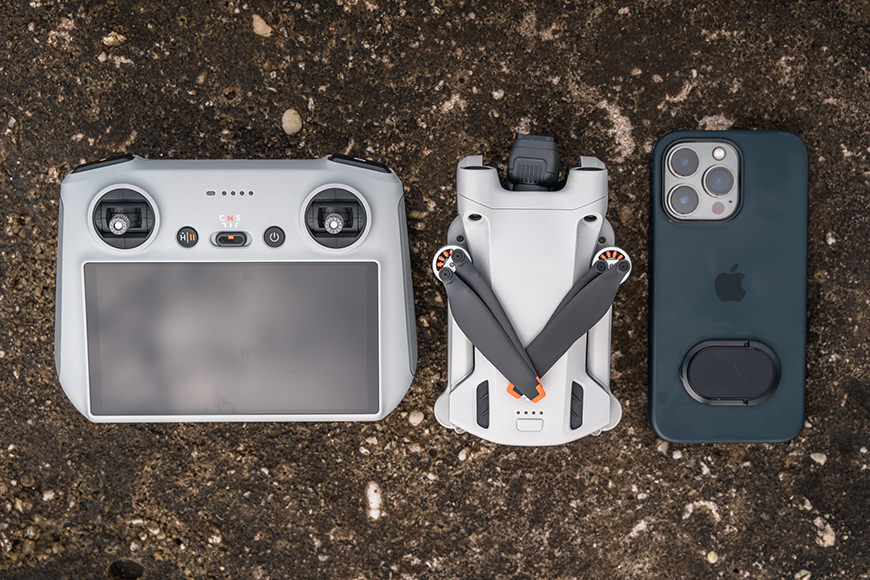
The DJI Mini 3 Pro as compared to the controller and an iPhone 13 Pro | Tommy Williams
It’s light, compact, and foldable, and because of its low weight, this selfie drone is very durable and can fly away from crashes that would bother bigger, heavier drones.
Its battery case functions as a charger, too. Clearly, this is a very handy feature to have if you want to take a lot of selfies in different locations and need to be charging up on the go.
DJI Mini 2 (Best Budget Selfie Drone)
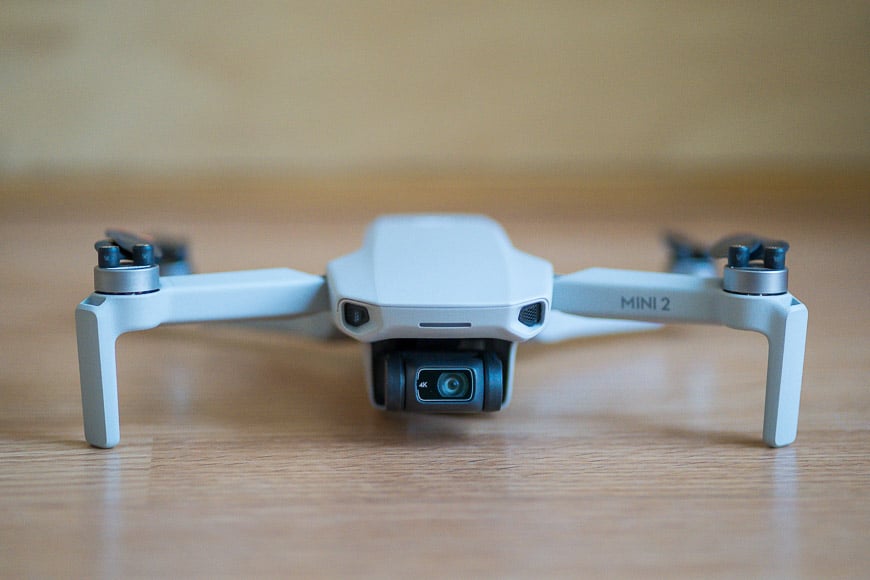
- 4K video
- Portable
- Easy to fly
- Quiet
- Takes RAW photos
- Not the best low-light performance
- No obstacle avoidance
- No in-built Follow Me feature
This tiny, light drone is a great budget option for taking selfies.
It’s fun and easy to fly, plus it’s relatively quiet and affordable since there are newer models available.
You can shoot 4K video with it up to 30fps, and the 12-megapixel 1/2.3-inch sensor also produces good quality RAW photos.
It has strong motors that can withstand high winds and is generally well-constructed and durable.
As it doesn’t have any sensors on its body, there’s no obstacle avoidance, so you need to be careful about how you fly it and where.

DJI Mini 2 | 1/50 f/2.8 ISO 200 | Marc Bergreen
This lack of sensors also means a lack of flight modes like Active Track. So, you’ll need to also get the app Litchi for DJI Drones to be able to access a Follow Me feature (iPhone/Android).
Litchi is not compatible with the DJI Mini 2 SE, which is why the more recent SE didn’t make the cut for this selfie drone guide.
Unlike previous iterations, which used Wi-Fi, this drone uses Ocusync 2 to provide a reliable, low latency, and strong connection between the drone and the controller.
It’s also very portable. Its charging hub has a USB port, so with a battery pack, you can be charging batteries as you move from one selfie location to another.
DJI Ryze Tello (Affordable Selfie Drone for Beginners)
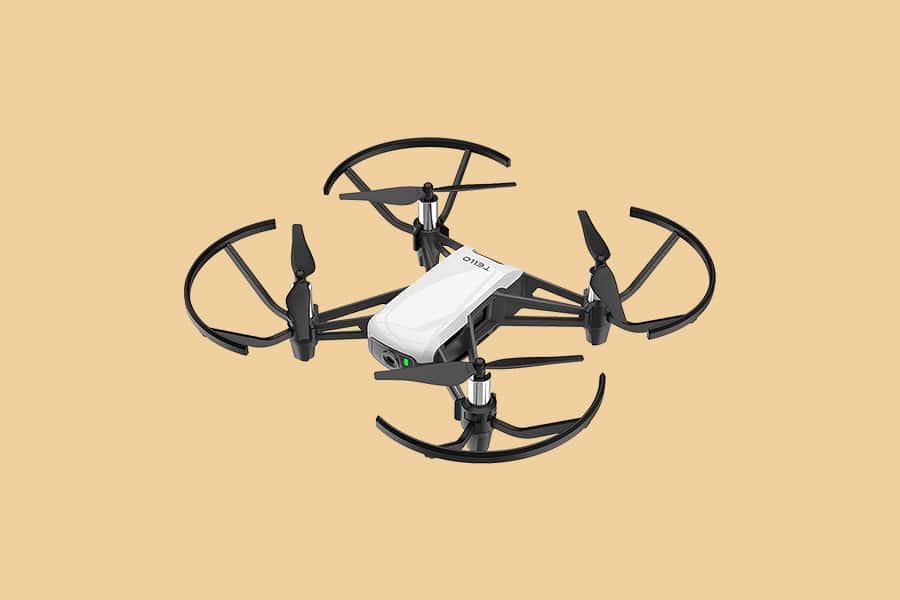
- Simple to use
- Durable
- Propeller guards
- Cheap
- Quite noisy
- Fixed camera, no tilt
This is my pick for the best selfie drone for beginners, as it’s very easy to use, and it also comes at a beginner-friendly price of under $150 (or around $100 second-hand).
It has a durable and light build, propeller protectors, and is very stable in the air (indoors, at least, outdoors can be a bit of an issue as it’s very light).
It shoots good quality MP4 video and 5-megapixel jpegs. The footage is electronically stabilized, which is unusual at this price point.
You can fly it for up to thirteen minutes, and if the battery gets low, the drone descends and sends you a message that it needs to land.
It can fly up to 100 metres away, although its range can also be increased with the use of a Wi-Fi range extender.
As there’s no microSD, all your photos and selfie footage are saved straight to your phone or tablet.
One thing to note about this, though: although it’s marketed as a selfie drone, you can’t share anything directly to social media from the Trello app. You need to transfer the files to your computer first.
Skydio 2+ (Impressive Selfie Drone for Professionals)
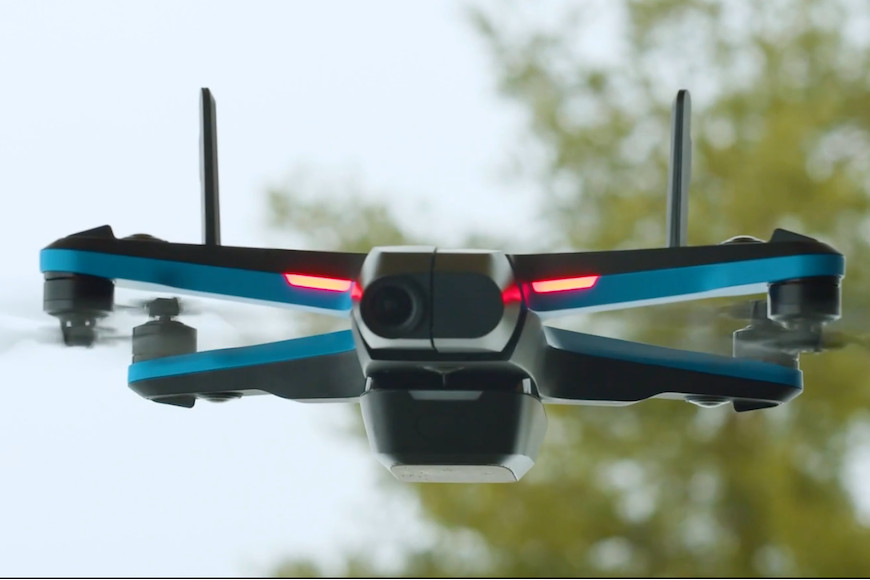
Image Source: www.skydio.com
- Good range
- Well-designed
- Excellent tracking capabilities
- Made in USA
- Some lag with visuals and drone response
- Quite loud
- Unavailable outside USA
This is an outstanding selfie drone, but the consumer-grade versions are being discontinued, so you’ll need to pick one up second-hand.
However, if you’re a small business, you can still get them through their enterprise program, and the starter kit is about $1,000.
The Skydio 2+ includes a number of improvements to its predecessor.
Pop-up antennas double their range to 6.5 kilometres, the battery life is upgraded to 27 minutes, and there’s a new flight mode – Keyframe – which can help you pre-program cinematic selfie shots.
This American-made drone is well-designed, with a magnetic battery clip and 360-degree obstacle avoidance. It’s also very easy to land.
The drone homes in with great accuracy on the logo on its hard-shell carrying case, so you always have a safe, flat surface to bring it back to.
There are three ways to control it, from the controller, directly from the phone, or using the GPS Beacon.
And, the most important thing, when using it for selfies, it tracks subjects amazingly well.
Just select the subject on the screen, and it will follow it with eery accuracy – it’s the best follow-me drone available today.
It can also track multiple subjects simultaneously, as long as they’re not too far apart.
Holy Stone HS720E (Best Mid-Priced)
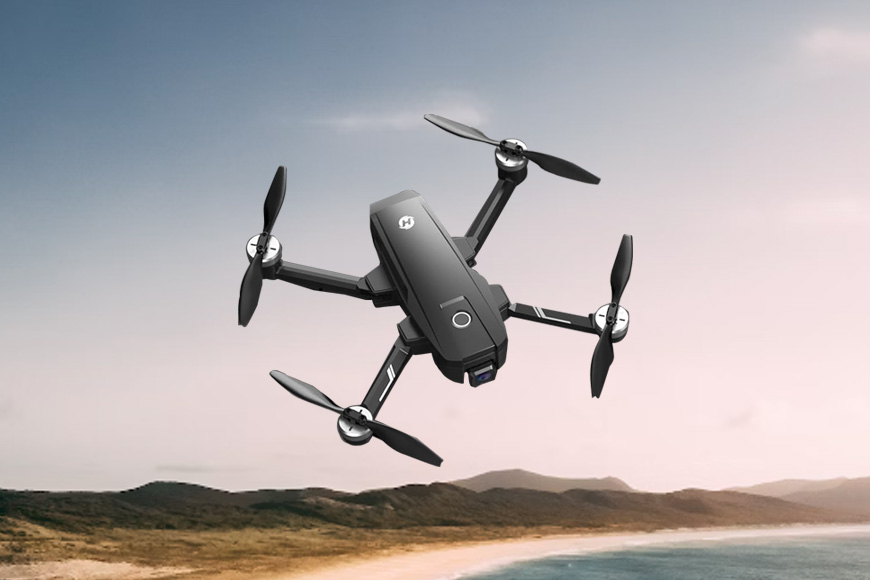
- 4K video
- Image stabilisation
- 90-degree tilt camera
- Good tracking
- Can often see the propellers in the footage
- The colours are a little washed out
- Bulky and heavy
This is a decent, mid-priced selfie drone that can shoot 4K video at 30fps and jpeg stills.
It has image stabilisation, and the camera has a 3-axis gimbal, so the footage it produces is smooth.
You can fly it for up to 26 minutes at a time and up to one kilometre away.
It’s pretty stable, too, although it can be a little wobbly when changing direction or when tilting the camera.
You can adjust this camera angle and the zoom level with the controller or from the native app.
It has an “Optical Flow Positioning” mode that uses a bottom sensor to keep the drone stable and track the movement of a subject.
And the tracking works well in all modes, which are ‘GPS Follow Me’, ‘Orbital’, and ‘Point-of-interest’. These work by following the controller though, not the subject itself, so if you’re taking selfies, make sure you have the controller on you.
It also has an automatic return-to-home function for when the battery gets low.
EXO Cinemaster 2 (Feature-Rich)
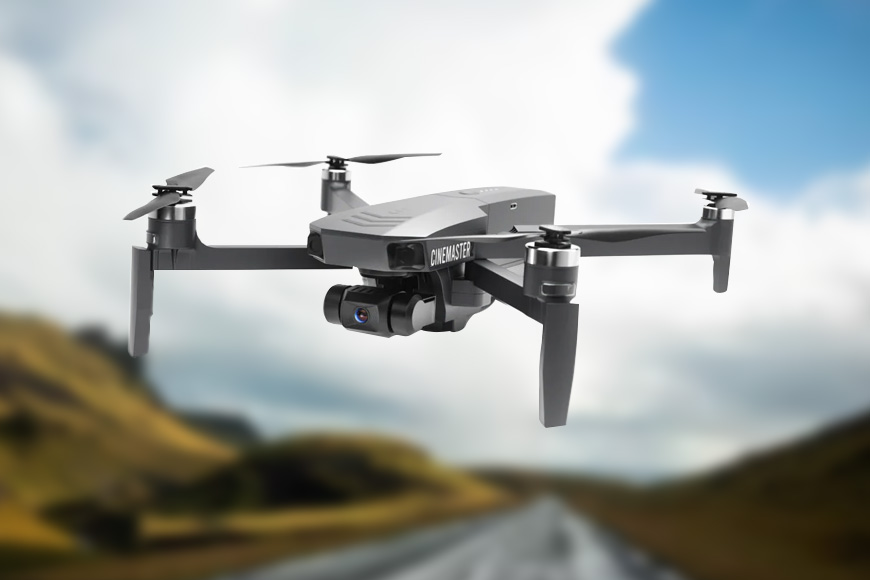
- Simple user interface
- Excellent range
- Good flight time
- Auto take-off and land
- Excellent tracking
- Build quality feels a little cheap for the price
This selfie drone, the EXO Cinemaster 2, is a feature-rich piece of kit based around a 1/2.3-inch Sony CMOS sensor and a fixed aperture f/2.5 lens.
It can shoot 4K UHD video at 30fps and 1080p at 60fps.
Its 3-axis gimbal is sturdy and well-made, and, along with the drone’s sensor-driven image stabilization, does a good job of producing smooth footage.
You can fly this selfie drone at up to 27mph in Sport Mode, or choose Cinematic Speed for a slower flight, either way, the drone is stable, and it can also stay this way in winds of up to 20mph.
Its tracking modes work exceptionally well, too. There’s Hover Hold, which will keep you in focus during a stationary flight, plus Follow Me and Circle Me, which will carry out an orbit.
12 Tips for Enhancing Your Selfie Drone Photography
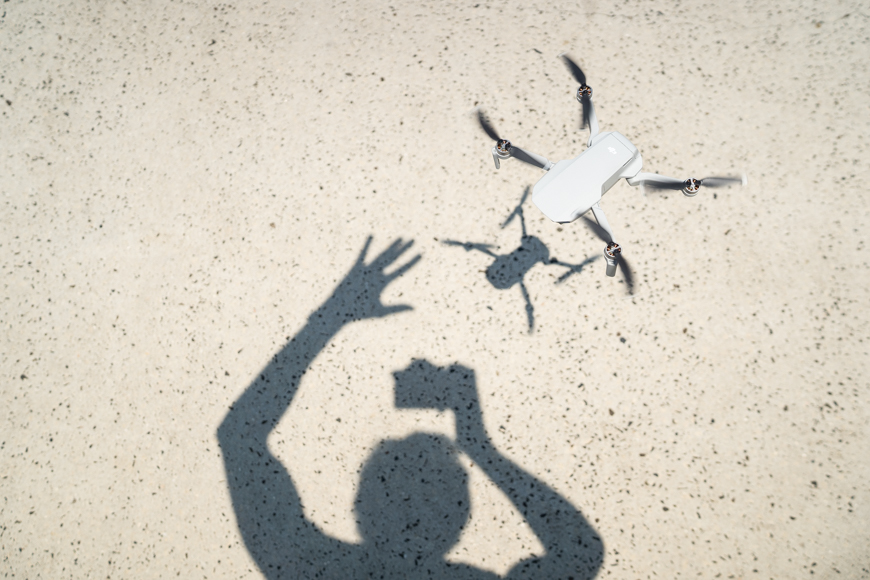
Here are some tips to enhance your selfie drone photography, which can also be used for regular aerial photography with a drone or quadcopter:
- Understand Your Drone’s Camera: Familiarize yourself with the camera settings on your drone. Knowing how to adjust settings like ISO, shutter speed, and white balance can make a significant difference in the final shot.
- Golden Hour Magic: Just like traditional photography, drone selfies look best during the golden hours – shortly after sunrise and just before sunset. The soft, warm light during these times can add a magical touch to your photos.
- Use the Rule of Thirds: Divide your frame into a 3×3 grid and place the main subjects or points of interest at the intersections of these lines. This can help in achieving a balanced composition.
- Experiment with Angles: Don’t just take a photo from a straight-on angle. Try capturing from above, from the side, or any other unique angle that might make your selfie stand out.
- Background Matters: The advantage of a drone selfie is the vast and expansive background. Choose a location that offers a captivating backdrop, whether it’s a city skyline, a serene beach, or a dense forest.
- Gesture Controls: Many selfie drones come with gesture controls. Learn and use them to your advantage to capture candid moments without always relying on a remote.
- Avoid Overcrowded Areas: Not only for safety reasons but also to ensure that your selfie stands out. A cluttered background can divert attention from the main subject.
- Post-processing: Use photo editing software to enhance colors, correct any distortions, and crop if necessary. Sometimes, a little touch-up can transform a good photo into a great one.
- Practice Safety: Always be aware of your surroundings. Ensure you’re not flying in restricted zones, and always maintain a line of sight with your drone.
- Continuous Shooting Mode: Use this mode to take several shots in quick succession. This increases the chances of getting that perfect selfie with the right expression and pose.
- Use ND Filters: Neutral Density (ND) filters can help control the exposure, especially in bright conditions, allowing for smoother and more cinematic-looking photos.
- Plan Your Shots: Before sending your drone up, have a clear idea of the kind of shot you want. This reduces air time and battery usage.
How to use the Follow-Me Mode on a Drone for Taking Selfies
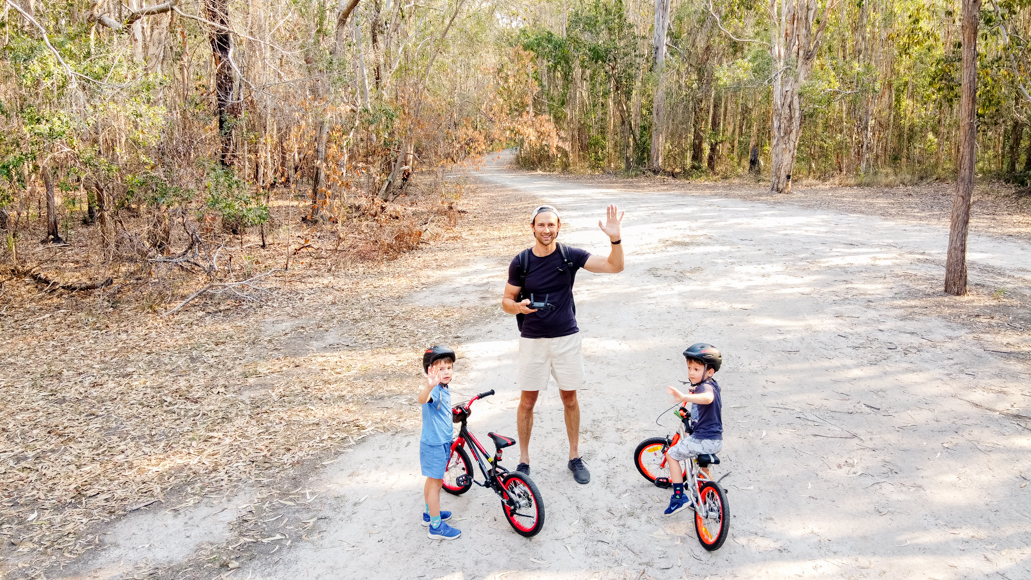
Drone selfie taken with Mavic Mini
So, you’re keen on exploring the “Follow-Me” mode on your drone? It’s a fantastic feature that can really elevate your drone photography and videography game. Let’s walk through how to get it up and running.
First things first, ensure your drone is fully charged. It’s essential to have enough juice for the flight, especially if you’re planning to capture extended footage.
After you’ve powered up your drone, give it a moment to hover. This initial hover helps the drone stabilize and get a clear sense of its surroundings.
Now, on your controller or the accompanying app, you’ll want to locate the “Follow-Me” mode. Depending on your drone’s brand, it might be nestled under flight modes or advanced settings. Once you’ve pinpointed it, go ahead and activate the mode.
The next step is to designate the subject you want the drone to track. In most cases, that’s going to be you. However, if you’re feeling adventurous, you can set it to follow another moving object.
To do this, you’ll typically draw a box around the subject on your controller’s screen or smartphone. This action signals to the drone what it should focus on.
With the subject selected, you can start your movement. The drone will maintain its focus on the designated subject, ensuring it captures smooth and consistent footage. It’s a bit like having a personal cameraman in the sky.
A few pointers to remember: Always choose an open area with minimal obstructions. This ensures the drone can track you without any hindrances.
And always, always keep an eye on the battery level. It’s crucial to ensure the drone doesn’t run out of power mid-flight.
There you have it. With these steps, you’ll be able to make the most of the “Follow-Me” mode. It’s a game-changer, and with a bit of practice, you’ll capture some truly memorable shots.
Selfie Drone FAQs
What’s the difference between a self-flying camera and a selfie drone?
A self-flying camera flies itself; you have no control over the device’s operation once it’s in the air.
Of course, you can adjust its settings before it takes off, but once it’s aloft, you need to wait for it to come back before you can control anything else.
A selfie drone is something you have more control over. Although they often have automatic settings and intelligent flight modes, you have total control over the drone – its height, speed, camera angle, etc. – while it’s flying.
Are drones good for selfies?
Yes, they are. Using a selfie drone, you can get a dynamic selfie that you wouldn’t be able to get from a normal camera or mobile phone.
What drone will automatically follow you?
Many drones have Follow Me features or intelligent tracking modes. They can either follow the controller or, with the best selfie drones, you can select a subject to follow on the screen.
All of the drones in this guide have some way of following a subject, whether through following a signal, by use of an intelligent tracking mode, or via an app.
Does a selfie drone need “headless mode”?
Headless mode is useful for beginners in any situation, but it’s not necessary for a selfie drone.
If you’re shooting a selfie with a drone, you won’t need to fly the drone far away. It will generally always be within sight.
Headless mode is something you only really need for longer-range flights when you lose sight of the drone and are no longer sure of its orientation.
Is it better to control a selfie drone via smartphone or a controller?
That completely depends on which method is most comfortable for you.
If a selfie drone doesn’t transmit telemetry to your smartphone, it could be best to fly using a controller. Likewise, if you want or need a higher level of flight control.
Otherwise, many drones nowadays allow you to do both.

Smallest, lightest and simplest selfie drone available. Portable enough to have with you every day.





